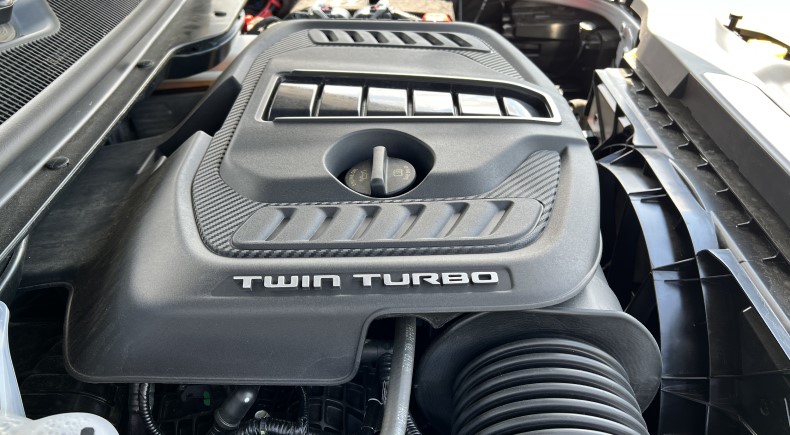Amid the rush to electrification, count Stellantis among automakers that recognize the need to provide customers with strong internal-combustion alternatives that gain efficiency without sacrificing power.
The proof? Stellantis’ clean-sheet, 3.0L twin-turbocharged Hurricane inline 6-cyl.
The high-output version we tested in the ’22 Jeep Grand Wagoneer definitely whips up a storm, producing 510 hp and 500 lb.-ft. (678 Nm) of torque. That was more than enough to impress our judges, all of whom are quite familiar with the big Hemi V-8s this engine is destined to replace in large cars, SUVs and pickups across the Stellantis lineup. At just under 34 ins. (864 mm) in length, the I-6 is compact enough to pack into any Stellantis vehicle now fitted with a V-6 or V-8, engineers say.
At the listed output, the 3.0L HO engine more than doubles the horsepower per liter of the 6.4L Hemi (471 hp, 455 lb.-ft. [617 Nm]), while posting a 13% gain in EPA-estimated fuel economy.
Technology abounds: Twin turbos – one for three cylinders each to minimize turbo lag – and dual high-pressure (5,075-psi [350-bar]) fuel-injection pumps are two examples. Spray-in cylinder bore coatings reduce friction, save weight and enhance durability. Simple starter-motor-engaged stop/start is nearly imperceptible.
Add in dual overhead cams, hydroformed tubular camshafts, dual variable valve timing, sodium-filled valves, a water-cooled, head-integrated exhaust manifold and a continuously variable oil pump and it’s evident the engineering team took full advantage of the clean sheet they were given to produce an engine that employs all the latest technology in pursuit of efficiency and performance.
Our judges reported zero issues with power and torque, whether accelerating from a stop or passing. The 45-70 mph (72-113 km/h) response comes on with authority – no worries about making a pass on a two-lane country road or entering a quick-moving freeway. Engaging Sport mode amplifies all of the above.
At the same time, our observed average fuel economy hovered around 19 mpg (12.4 L/100 km), outpacing the 3-row SUV’s EPA combined rating of 17 mpg (13.8 L/100 km).
The Hurricane I-6 earns our 10 Best Engines & Propulsion Systems honor as it marks the start of an engine family that will grow to include a standard-output version, a 4-cyl. and eventually, electrified setups designed to provide the necessary propulsion to carry Stellantis forward until the battery-electric future arrives.
“Considering these vehicles are used for long road trips and towing boats and horse trailers, these buyers will be the last to go electric,” notes judge Drew Winter after his drive in our Grand Wagoneer tester. “This beast will be thumbing its nose at battery-electric SUVs in 2030.”






